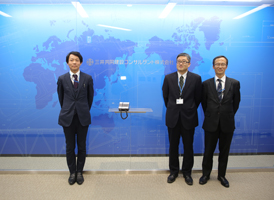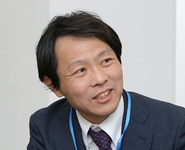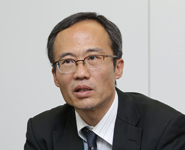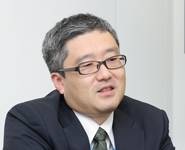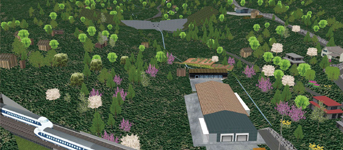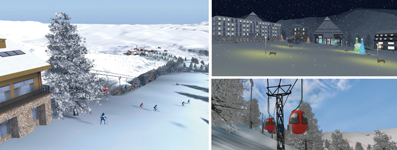Achievement over half a century for the central areas of river, roads and bridges, port and harbors
Mitsui Consultants Co., Ltd. (MCC) was founded in 1965 as a construction consultant company of Mitsui Group. Since then, the Company has been expanding scope of business.
With the headquarters in Tokyo as its core, it branched out into 5 branches in Tohoku, Tokyo, Chubu, Kansai, and Kyushu, 7 offices (6 domestic offices within the service areas of each branch and "Hanoi Office" controlled by Overseas Project and Regional Development Division),
and 31 business offices. 402 employees are placed all over them (Figure is as of the end of January, 2017).
In 2015 when it celebrated the 50th anniversary, MCC moved its headquarters to the current place of Gate City Ohsaki in Shinagawa-ku, Tokyo.
Covering planning of wide-ranging social infrastructure projects and private business to research and planning, design, and supervision,
MCC is composed of the following 7 Divisions: 1) Road and Bridge, 2) River and Sewage, 3) Environment and Port, 4) Geological Engineering, 5) Information System, 6) Planning and Construction Management, and 7) Overseas Project and Regional Development.
Among them, the Road and Bridge area occupies about 70 % of the whole sales.
MCC also performs not only domestic but also overseas projects actively, boasting of business achievement in more than 50 countries so far.
MCC Institute to lead in-house dissemination of 3D data and development of ways of its use
"It is to assist the activities of multiple research groups with employees who want to introduce the latest technologies (into various divisions), and to study them as the core members".
Mr. Takashi Yamazaki, Head of MCC Institute explains part of his own role to take responsibility of developing new technology and provision of technological information for inside the company.
Among these activities, it is "CIM Utilization Study Group" that support CIM, which uses 3D models, and i-Construction derived from CIM.
Using software programs of FORUM8 and others that handle 3D data in a test mode, they compare and study respective characteristics and practical ways of using.
Giving feedback of the knowledge obtained there to the employees, they are making efforts to disseminate it.
Mr. Takao Ishihara of MCC Institute, who lead the Group, stands on the basic position of "trying first (using various software products).
If you find something usable, you can spread it". Also, regarding CAD, from the opinion that "it is high time to work with 3D", rather than instructing all the newcomer to "learn 2D CAD first" just as before,
they have formed the trend to instruct them to learn 3D CAD from the beginning so that they can use it.
In parallel with this, Mr. Ishihara and others committed themselves to explore how to utilize 3D data based on their actual business. For example, in bridge projects, they created 3D models of the surrounding area of piers where various elements such as PC steel and reinforcing rods are congested. The models are used for interference check and so on. They also created a detailed 3D terrain model from the point crowd data obtained through aerial photogrammetry using Unmanned Aerial Vehicle (UAV). This 3D model is used for constructing high fills, calculating the required amount of earth based on the difference between the actual situation and design.
For other external activities in MCC, they organized "Association
to Study Social Infrastructure Services" with other construction consultants,
surveying companies, construction companies, and related manufacturers.
There the concerned parties study creation of models suitable for the respective
needs, their delivery, and utilization that leads to improvement in production
efficiency.
Committed to International Expansion of Disaster-prevention Business and Joint Researches with Universities
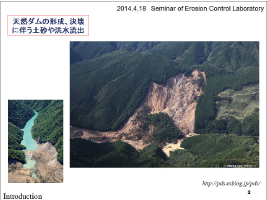 |
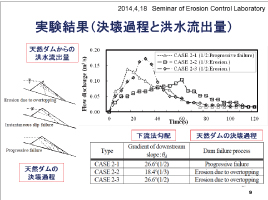 |
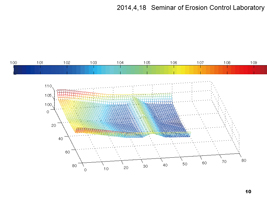 |
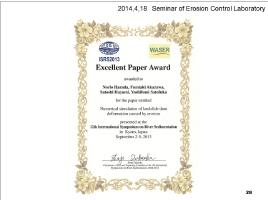 |
| Sediment disaster research in universities |
At present, Mr. Harada, who mainly uses UC-win/Road, belongs to "River and Sewage Division" and "Overseas Project Department, Overseas Project and Regional Development Division". The former supports overseas infrastructure matters that the Company deals with and domestic projects that require the consensus building process. On the other hand, the latter supports business related to the river basin ranging from the mountainous region to the coasts.
It is road inspection for disaster prevention that Mr. Harada focuses on as an overseas infrastructure matter. Generally in developing countries, measures for restoration from debris flow or sediment disasters such as fill failure are taken as the main measures. Thus, the damage tends to be so remarkable as to interfere people's life as well as cause increase in cost as a result compared with measures as the preventive maintenance. Therefore, he is planning to build up the mechanism to mitigate damage by predicting disasters by disaster prevention inspection utilizing technical knowledge accumulated so far in Japan, and by taking proper measures in advance.
He also works as a researcher of Graduate School of Agriculture, Kyoto University and a part-time lecturer, College of Science and Engineering, Ritsumeikan University. Within the company, he is mainly in charge of disaster prevention and erosion control (sabo), while specializing prediction and countermeasures about movement phenomena of sediment and water (e.g. debris flow) in joint researches with these universities.
In particular, he developed the strength of the Company in the software measure for sediment disaster or disaster prevention measures for debris flow ("yama-tsunami" (mountain tsunami)). Through the joint researches with those universities, he is proposing structure (separation of sediment and water) for utilizing the fill of expressways instead of the embankment for debris flow. Moreover, he is positively applying ICT to engineering approaches. Focusing on the domain that connects areas of water and earth, which are core of civil engineering, he studies, for example, analysis technology for the mechanism of failure of natural damming (of a river due to landslide, etc.) (landslide dams), such as a burst due to overtopping erosion. To solve the burst mechanism of complex earth bank, he conducted large-scale burst experiments on the site as a joint research with the university. Further, he proposed an analysis model for reproducing and predicting these phenomena. Especially the analysis technology of Mr. Harada and others to predict overtopping erosion and seepage flow through soil in a compound way is highly evaluated; it was awarded as Excellent paper in an international symposium.
Utilization of UC-win/Road in Diverse Areas and Spreading Possibilities
In MCC, originally about 10 years ago, UC-win/Road was introduced for road and bridge areas. It has been used mainly for explaining road planning. Later, in addition to extended functions of UC-win/Road itself, in-house staff skilled with manipulation has been trained, spreading its effective utilization by him and others in many different fields.
For example, in road design work that required consideration that the erosion control dam included in the design section would not cause Driver Distraction, they reproduced the driver’s view after its completion (internal landscape from the travelling vehicle) using VR. It was intended to make the concerned people feel bodily in advance by setting up weather, time zone, travelling speed in various ways. They worked on this in cooperation with the section in charge of roads, verifying that the concerned matters would cause almost no problem.
What's more, our company commercialized "UC-win/Road Debris-Avalanche
Simulation Plug-in" with "Debris flow simulator (Kanako)"
as its solver, which he and others study jointly with universities. Using
this, Mr. Harada and others created "Using VR to Communicate to the Locals Over Debris Avalanche Countermeasure" to explain the disaster risk of debris flow and the functions of check dams (sabo dams), the planned check dams and the outline of its construction. This work received Nomination Prize and Idea Prize in the 14th 3D VR Simulation Contest on Cloud (2015).
 |
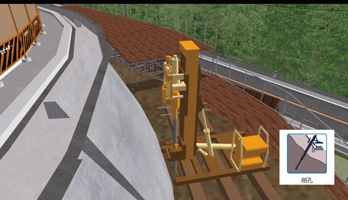 |
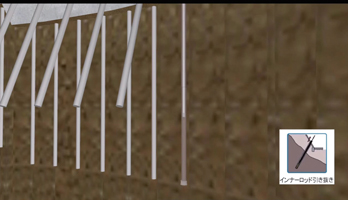 |
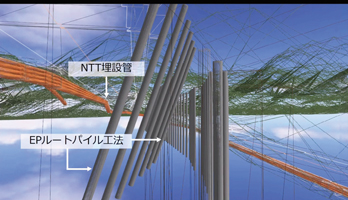 |
Explanation of a special construction method utilizing VR.
The scenes of work under the ground are realistically reproduced. |
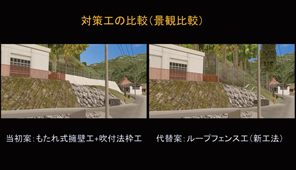 |
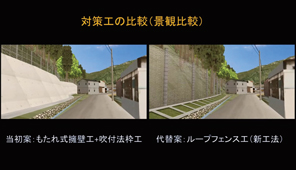 |
Cases of comparative examination of the countermeasure construction methods
(comparing and examining landscape) |
Support for VR in Future, Importance of Maintenance Phase
Thinking "Young generation should be the first to try UC-win/Road", Mr. Harada encourages his students to use it. Responding to this, students of Resuming University created Urban redevelopment using water space that expressed necessity of water purification in developing the coast area. The work received Nomination Prize in the 6th VDWC (2016).
However, though creation of VR requires a great deal of labor, there are not a few cases that the VR for explaining projects does not receive due evaluation. Thus, Mr. Harada mentioned an approach of presenting the whole in a coarse VR work first with a part in detailed VR to the client. Seeing the client’s reaction, it is negotiated whether everything should be created in detail. He states the importance of steadily expanding the circle of understanding towards VR.
On the other hand, Mr. Ishihara points out that "the final goal of CIM is how to use models on the stage of maintenance", and that it is necessary to judge what kind of data are required for this. Mr. Yamazaki claims that as a view point in doing so, national economy and situations in 20 and 30 years ahead should be taken into account.
"I think there is the optimum solution according to respective areas. In the future, however, I feel it will become important to work in such a way that lead to the people in the following ages, imagining the future stages ahead of ourselves, for example, how to maintain the designed things".
|
